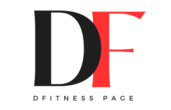How To Grow Your Calves
Published on May 17, 2022.

What's the calf?
The calf is the back part of your lower leg, between the ankle and the knee. The calf is responsible for helping you walk, run, jump, and not fall over. There are two muscles in the calf muscle group: Gastrocnemius muscle and Soleus muscle. The Gastrocnemius muscle is the larger muscle of the calf. It starts from the back of the femur and forms the bulge on your leg. It has two heads which merge to form the Achilles tendon. The Gastrocnemius muscle is key for you to be able to point your toes downward. The Soleus is a deeper muscle that’s located beneath the gastrocnemius. It starts from the tibia and fibula and attaches to the Achilles tendon. The soleus is important because it allows you to be able to walk, run, stand, and jump.
Cool, how do I make my calves huge?
Okay, the first thing you should do is start doing calf raises. There are several variations of calf raises such as standing calf raises, seated calf raises, or calf raises on leg press machines. Calf raises are a fundamental exercise for calf development. Another thing you could add to your workout is jumping ropes. Jumping rope is a dynamic cardio exercise that engages your calf muscles and can also help you get your cardio in. Another cardio exercise that helps you grow your calves is stair climbing. Either using the stair machine at the gym or taking the stairs instead of the elevator, climbing stairs is a great option. After you create a workout plan, try to implement progressive overload and stretching. Progressive overloading will stimulate muscle growth and can make them stronger. Stretching will prevent injuries and allow you to be more flexible. However, there is one important part that will be the hardest thing to do; you have to stay consistent in order to achieve any goal.

Some common myths:
- Calf Size is Solely Determined by Genetics: While genetics can play a role in the size and shape of your calf muscles, it doesn't mean that you're limited by them. Proper training, consistent effort, and targeted exercises can still help you develop and strengthen your calf muscles, regardless of your genetics.
- High Repetitions with Light Weights Define Your Calves: There is a misconception that performing high repetitions with light weights will result in defined and toned calf muscles. While higher repetitions can contribute to muscle endurance, to stimulate muscle growth, you need to challenge your calf muscles with heavier weights and progressive overload.
- Calf Raises Make Your Calves Bulky: Some individuals believe that performing calf exercises like calf raises will make their calves appear bulky. However, developing bulky calf muscles is unlikely for most people. Building muscle mass in any area of the body requires specific training, nutrition, and genetics. Calf exercises primarily help in toning and strengthening the muscles.
- Cardio is Sufficient for Calf Development: While cardiovascular exercises like running or cycling engage the calf muscles, they primarily focus on endurance rather than muscle growth. To specifically target calf development, it's essential to include exercises that involve resistance training and progressive overload.

What should I avoid doing?
There are several things that are a big no no. The first thing you shouldn’t do is neglect your form during a workout. Avoid using momentum to help you complete a rep. Make sure to keep track of your posture, alignment, and range of motion to make sure you’re engaging your calves properly. Another thing you shouldn’t do is overtrain. Yes, consistency is important but overtraining can reduce your progress and up your chance of injury. Make sure to rest between workouts to allow your calves to recover. If you start experiencing persistent muscle soreness, fatigue, or a decrease in performance, you should take a break from your calves or take a rest day. Not warming-up is another thing you should avoid doing. Warming up prevents cramping, muscle strains, and other injuries. Another thing you shouldn’t do is disregard your diet. In order to grow muscles, you need to provide your body with enough nutrients. Make sure you’re eating balanced diets that include enough protein, carbohydrates, and healthy fats.
QUESTIONS?
Feel free to ask us about anything. We will answer your questions or concerns as best as we can.
Fitness Products We Recommend

Weight Loss Products
All of the products you need to lose weight are found here for you.

Products to Help Grow Muscle
Wanna grow muscles? We found some products you could use.
